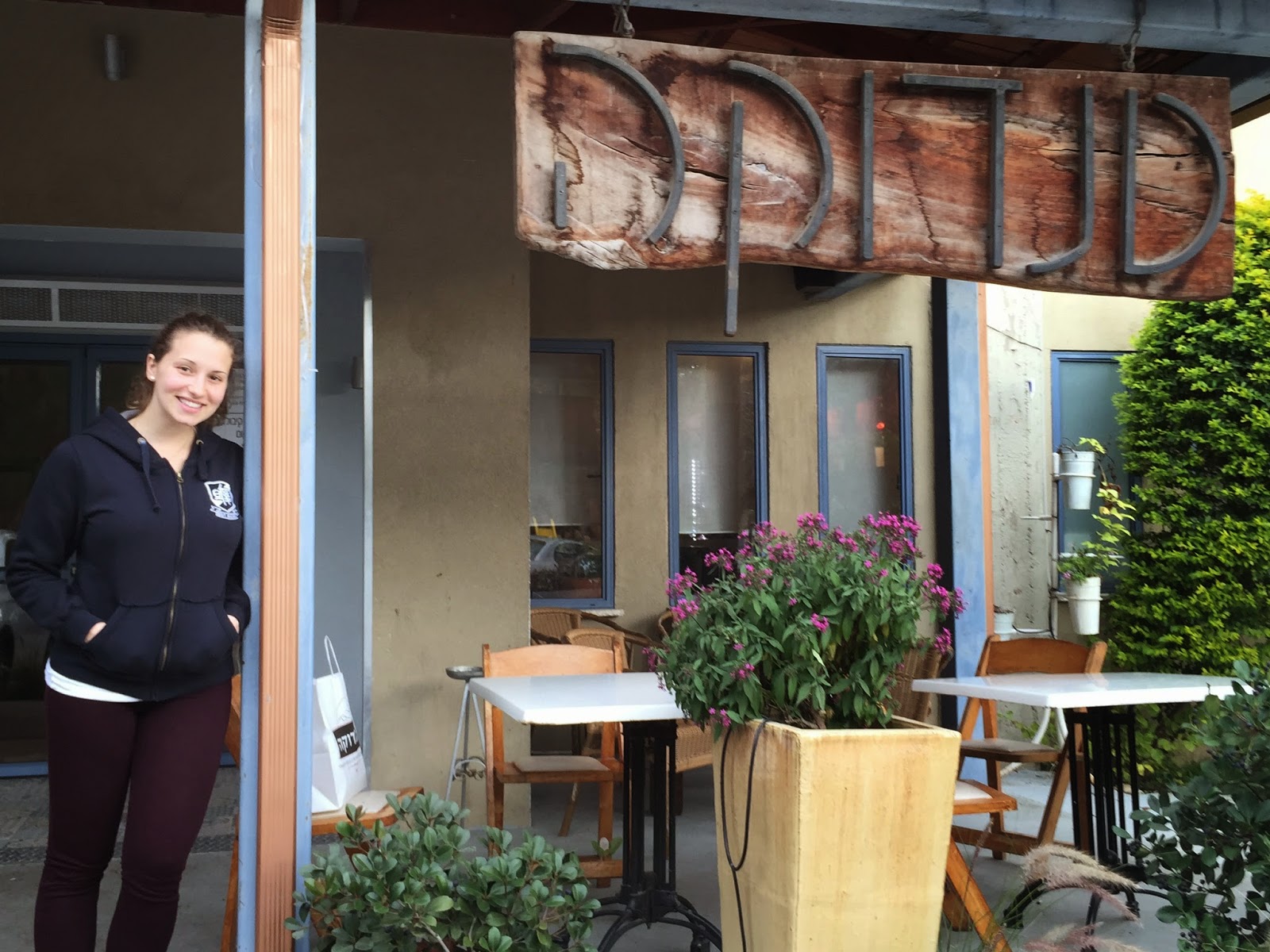Our first stop is at Daliya- a
kibbutz or consortium of kibbutzim and moshavim that that are part of a Unesco
approved biosphere reserve. We met with
the coordinator of all the programming for the reserve, her name is Hagar
Reuveni. She was born in the kibbutz and
after her education returned to the kibbutz to lead the program. In 2011, the region submitted its application
for the Unesco designation and was approved.
We traveled from Tel-Aviv to the north to visit the kibbutz in the Megiddo region:
A successful biosphere reserve is a region with a vibrant, flourishing and developed community that of its own free will accepts restrictions and practices that will facilitate full sustainability in all aspects of life.
We sat and talked with Hagar for over an hour. Of course, in the area there are many sites to see, hikes to take, streams to visit and overlooks. The area is so much more hilly than the flat terrain of Tel Aviv; the air is cooler, too. The vistas are grand.
Hagar gave us a recommendation for a small restaurant called Tandooka located in a moshav not very far from her offices. We managed to locate the restaurant with the help of a tax driver. what a lovely meal. relaxing and delicious.
But, our day was not to end there; we were headed to the very north- the small finger of land north of Lake Kinneret- Tiberias. Up to the border of Lebanon.
Maura had a plan to visit with a kibbutz Daphna in the morning; she arranged for us to stay at a kibbutz hotel named Hagoshrim. - more than a hotel- this is a spa. And since darkness falls by 5, we wanted to be in the vicinity before dark. Our trip- about another hour, was through rolling countryside.
And so we continued our travels. we pulled into Hagoshrim. and checked in to a lovely resort. Maura signed up for a massage; we headed for a rest. we signed up for massages for the next morning and opted out of her tour of Daphna. Dinner was an experience. Israeli resorts and hotels typically have large and excessive buffets- that are hard to imagine if you haven't experienced them; this one was one of the most impressive I have seen. There must have been more than 50 salad choices alone; more than 3-4 fish options and chicken and meats. And all the foods were labelled- gluten free, vegan, etc. The restaurant was also kosher- so for dinner, there is no dairy. At breakfast- equally opulent - the food is all dairy- fish is considered a non- meat and so may be served at any meal and is served in various guises at every meal. In the morning there is a wonderful tuna fish and smoked and pickled fishes of all kinds.
The air is chilly; we enjoy dinner, are exhausted and, we have a big day on Monday. Two kibbutzim to visit and to get home. We have no idea what will be in store for us; each experience is so vastly different from the one before.






No comments:
Post a Comment